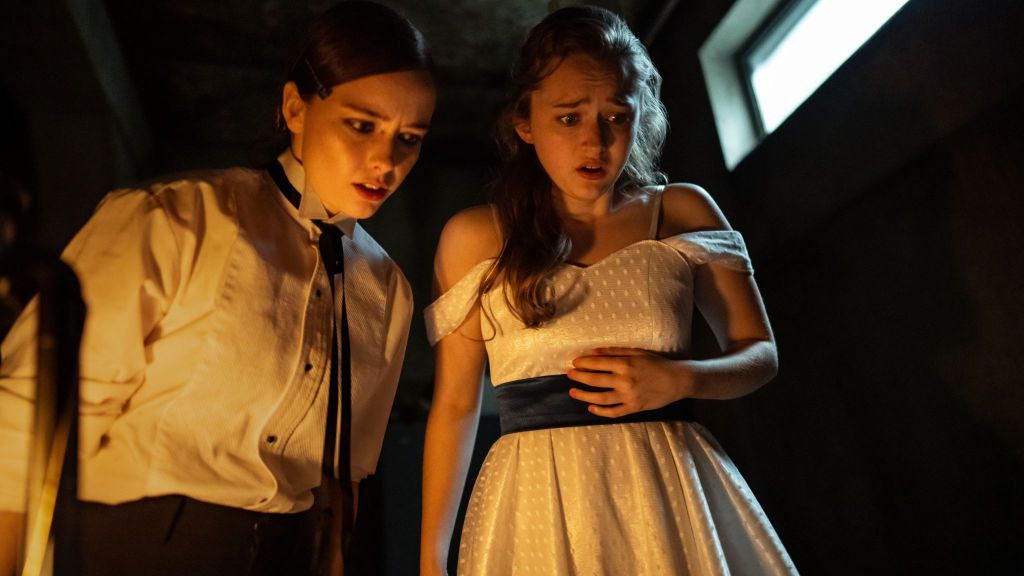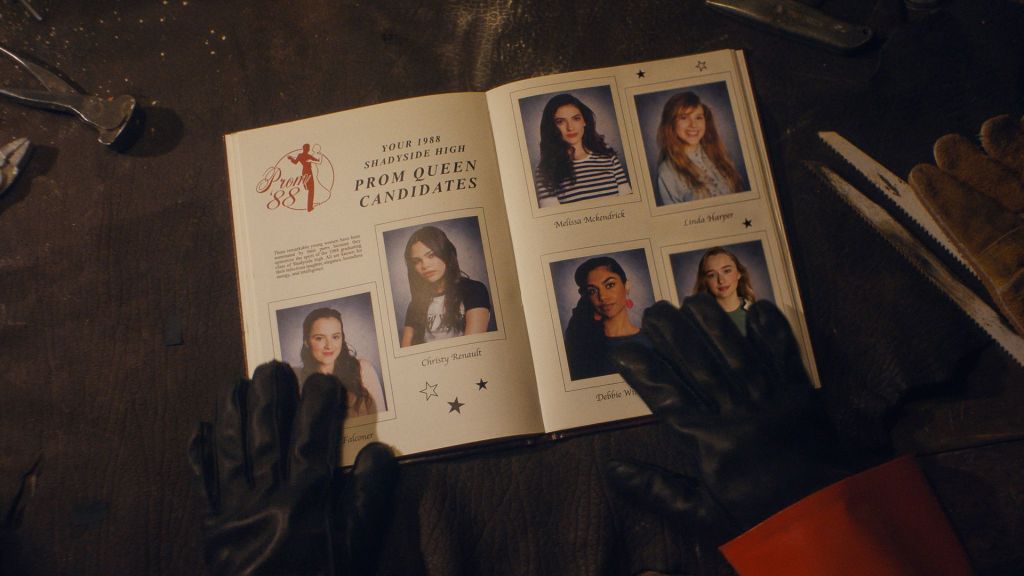With Fear Street: Prom Queen, Netflix adds to its catalogue another bloody tale inspired by the books of R.L. Stine. The fourth movie in the franchise is set in 1988 and follows events that take place between the two major Shadyside massacres depicted in the original Fear Street Trilogy. However, unlike the original movies, Prom Queen tells a standalone story, rather than retreading the supernatural mythology of the witch Sarah Fier. That doesn’t mean the film is entirely uncoupled from the Fear Street Trilogy, as Prom Queen has several references to the larger franchise and an ending that ties it closely to the original movies, albeit in a weird way.
Videos by ComicBook.com
Warning: Spoilers below for Fear Street: Prom Queen
Fear Street: Prom Queen revolves around Lori Granger (India Fowler), a student from Shadyside High who decides to run for the coveted prom crown. As a citizen of Shadyside, Lori is used to awful things happening in her city, but even in her turf, she is a pariah, bullied for something that supposedly happened with her parents. Years before the movie begins, Lori’s mother fell in love with a Sunnyvale boy who got her pregnant before prom. The boy was found stabbed to death, which started nasty rumors that Lori’s mother was responsible. This grim story underlines the recurrent schism between Shadyside and Sunnyvale, at the heart of the original Fear Street Trilogy. Prom Queen also reinforces this divide by name-dropping both communities and explaining how the social inequality between Shadyside and Sunnyvale is part of everyday life.

[RELATED: R.L. Stine Confirms Even More Fear Street Movies Are on the Way (Even After Prom Queen)]
The latest Fear Street movie also directly references the series’ events. For instance, there is a shrine in Shadyside High honoring the victims of the Camp Nightwing massacre, a story told in Fear Street: 1978. This massacre is also mentioned by police officers who are called in to handle the murder spree at prom night, right at the end of the movie. Keen-eyed fans will also see “Sarah Fier lives” graffiti in the school’s bathroom stalls, referencing the pervasive witchcraft myths that the Fear Street Trilogy slowly unravels.
The most direct reference to the supernatural elements of Fear Street appears in the final moments of Prom Queen. At the movie’s end, Lori must fight for her life as she’s attacked by her arch-nemesis, high schooler Tiffany Falconer (Fina Strazza), and her vicious mother, Nancy (Katherine Waterston). Tiffany dies after falling from a flight of stairs and being impaled on her way down. Nancy, enraged, tries to get revenge on Lori, only to be bashed in the head by a trophy. Lori escapes the Falconers’ mansion, leaving Nancy behind, bleeding to death. In the final seconds of Fear Street: Prom Queen, we see the body of Nancy, now deceased, beside a pool of blood that dripped from her eyes. This pool of blood is shaped like the Witch’s Mark of the Fear Street Trilogy, hinting at a supernatural force guiding the Falconers’ murderous impulses. That contradicts the franchise’s canon and makes absolutely no sense.
Fear Street: Prom Queen Ignores the Franchise’s Mythology

The Fear Street Trilogy reveals that Solomon Goode (Ashley Zukerman) made a pact with the Devil in 1966, trading his neighbours’ happiness for healthy crops. To seal his deal, Goode gives the name of Pastor Cyrus Miller (Michael Chandler) to the Devil, dooming him to be possessed by the forces of darkness and become the first Shadyside serial killer. Over the years, the Goode family ensured their continuous fortune and the wealth of Sunnyvale by frequently marking other Shadysiders to be possessed and sent on a killing spree, which explains the centuries-old cycle of violence that plagues Shadyside. The Witch’s Mark is the symbol used by Solomon Goode in his incantation and the evidence of his dark deals.
The appearance of the Witch’s Mark in Nancy’s pool of blood suggests she was possessed by the Devil when killing the prom queen candidates. However, that just cannot be true. For starters, the Fear Street Trilogy underlines that only one person is chosen at a time to become a serial killer. Yet, in Prom Queen, Nancy works with her daughter Tiffany and her husband Dan (Chris Klein) to slay the teenage girls. Furthermore, the killing spree of each possessed serial killer lasts only a few hours, while the Falconers killed their first victim the evening before prom. Also, Nancy admits to having killed Lori’s father because she was jealous, meaning she was a killer decades before the movie begins. Finally, the people possessed through the Goodes’ rituals lose autonomy and become enraged murderers. The Falconers, on the contrary, still maintain their mental faculties, carefully selecting their targets and making grandiose villain speeches.
The Falconers were supposed to be simple serial killers who decided to slay some girls to ensure Tiffany’s victory as prom queen. It’s a simplistic reason, but at least it doesn’t contradict the supernatural rules set by the Fear Street Trilogy. However, by showing the Witch’s Mark and connecting it to Nancy, Fear Street: Prom Queen suggests a link that makes no sense. Hopefully, new movies in the franchise will be more careful with the canon.
Fear Street: Prom Queen is currently available on Netflix.
What did you think of the new Fear Street movie? What are your thoughts on how Prom Queen alludes to the franchise’s mythology? Join the discussion in the comments!








